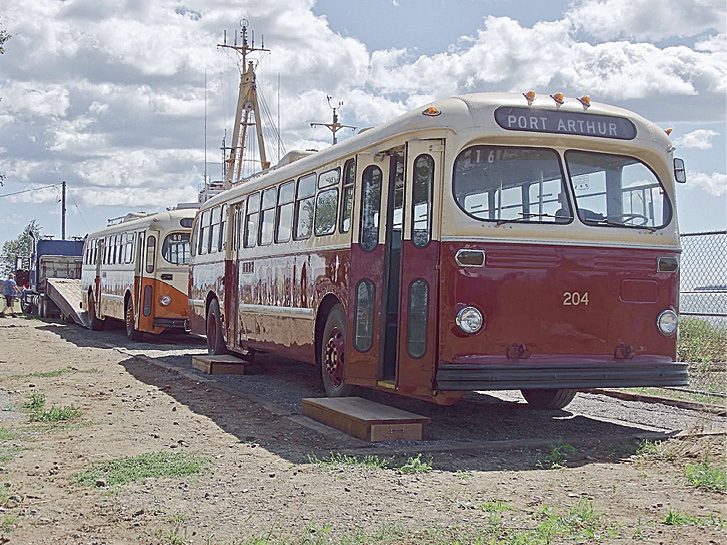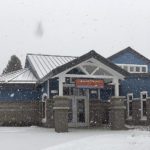Who remembers riding on Brill trolley buses in the U.S. or Canada? As of Sept. 1, visitors to the Lakehead Transportation Museum (LTM) waterfront site in Thunder Bay can relive the experience—indulge in some nostalgia—as two of the historic, electric-powered Brill trolley buses are now on permanent display in Thunder Bay beside the museum ship Alexander Henry.
The two trolleys were restored and painted in their original exterior colours by volunteers from the non-profit group Buddies of the Brills. Since 2007, the trolleys had been in protected storage while an appropriate “home” was sought. With the opening of the LTM in July 2018 and site preparation completed this summer for the buses, the trolleys have found their home.
These were state-of-the-art transportation vehicles at the time and built at the former Canadian Car Foundry (“Can-Car”) plant (now Alstrom) from 1945 to 1954. The trolleys were part of transit fleets all across Canada. In the Lakehead cities of Port Arthur and Fort William—amalgamated in 1970 to form Thunder Bay—the Brills were in service from late 1947 to late 1972.
During World War II, Can-Car had been a major manufacturer of the famous Hawker Hurricanes and Hell Diver planes, employing about 5,000 people. During the war, steel had been directed to the war effort resulting in transit fleets being unable to buy new buses. After the war was over there was no need to build new planes, so the plant was at risk of closing. But then Can-Car made a deal with Philadelphia’s American Can Foundry (maker of U.S. Brill trolleys) to build the Canadian Brills. The local plant was re-tooled and construction of the first Canadian Brill trolleys began in 1945. By the mid-1970s, most cities, including Thunder Bay, had replaced their Brills with diesel buses.

Almost everyone who rode the Brills remembers with a smile the ‘snap and crack’ of the poles that connected the trolleys to the overhead electrical grid and the dead-stop when the poles disconnected (the driver would have to go outside to re-hook them). The Brills had a distinctive curved design, wide aisles and comfortable seats.
“More like a living room couch than a utilitarian vehicle; the public loved the Brills,” said Charles Brown, president of LTM.
Lakehead Transportation Museum’s two Brill trolleys were saved from a “Brill trolley graveyard” in Richmond, British Columbia, where about 250 Brills were waiting to be scrapped. A dedicated team of volunteers—Buddies of the Brill—with support from the City, purchased two for $12,000 and restored them to their original condition and operating colours—burgundy and cream for Brills in the Port Arthur transit systems and orange and cream for the Fort William ones.
The Brill trolleys ceremonies were attended by Mayor Bill Mauro, Councillor Kristen Oliver and members of the public.
“I’m here basically on behalf of council celebrating the work of a group in the community who are really responsible for the success of this project,” said Mayor Mauro, who later did the honour of cutting the giant trolley-designed cake.






